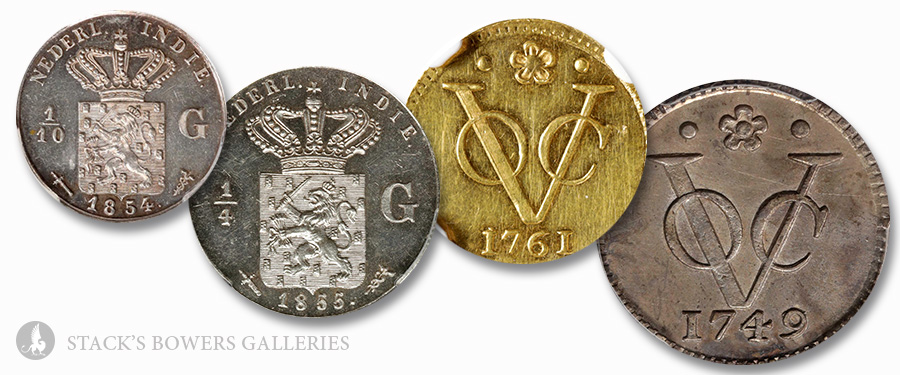
?The Dutch Colonial Empire is often forgotten when compared to the larger empires of the British, French, and Spanish. However, the Dutch Empire has left a legacy that can be seen in some unexpected places. One of the official languages of South Africa is Afrikaans, which derives nearly all its words from the Dutch language, highlighting South Africa’s Dutch Colonial past. Manhattan Island was purchased by Dutch explorer Peter Minuit for 60 Guilders in 1626, despite the concept of private property ownership being unknown to the Native tribes inhabiting the Island and the surrounding area.
What is now Lower Manhattan in New York City was a Dutch colony until 1664, when it was formally brought into the British Empire. Traces of Dutch language and culture remained in New York for many years after the formal end of New Netherland, with Dutch speaking villages remaining well into the 19th century. In one of these, Martin Van Buren was born, making him the only president of the United States who spoke a native language other than English. On the other side of the world, the Dutch East India Company began setting up outposts, forts, and trading towns in Southeast Asia in the early 17th century, with this influence lasting until the end of the Second World War.
The Dutch Empire was primarily focused upon establishing an economic trade network to generate wealth, rather than gobbling up large land areas for exploitation. This focus was an effort to confine colonized areas and limit costs, much as a large multinational corporation would today. The early origins of the Dutch Empire are found in a private corporation: The Dutch East India Company. The Dutch East India Company was the first corporation to ever be publicly traded on a stock exchange and is sometimes regarded as the largest corporation to ever exist. At the height of its power, the Dutch East India Company rivaled nations, with economic power that was unmatched. While a private company, the Dutch East India Company was a state-backed enterprise, with military support. By the end of the 17th century, this company’s primary base of operations was in the Netherlands East Indies, which acted as a profitable trading center between the Orient and Western European powers. This role led to great wealth and power for both the Dutch East India Company and the Netherlands more generally.
It was during this period of Dutch East India Company rule, which lasted until 1800, that the first coinage was produced in the area. This company coinage began in 1726 with the denominations of the Duit, Ducaton, and Gulden forming the basis of the currency. In addition to circulation strikes, patterns were produced in gold and specimens in silver for the Duit. In the May Hong Kong Sale Stack’s Bowers Galleries will be offering an example of each, with a 1749/7 PCGS Specimen-62 Silver Duit and a 1761 Gold ½ Duit Pattern providing exceptional eye appeal with the off-metal strike, despite the NGC UNC Details Designation.
By 1806 the political situation had shifted, with the Netherlands being under the control of the French and Napoleon Bonaparte. The Dutch East Indies fell sway to French domination as well, with Dutch control not formally reestablished until 1816, with the final defeat of Napoleon at Waterloo. After 1816, the Dutch East Indies was established as a proper Dutch Colony, under direct control of the Netherlands, and legally distinct from the Dutch East India Company. Over 100 years, the Netherlands established a firmer grasp of all of the Islands that now encompass Indonesia. Coinage was standardized and decimalized, bringing it in closer accord to the Netherlands Guilder that circulated in the Netherlands. Minting was additionally centralized in Utrecht, as before, and mintage varied between mints. While circulation coinage from this period is often abundant, proof issues had very limited production and are hard to find. The May Hong Kong Auction offers many proof examples and is one of the most numerous groups to come to market recently. All denominations except the ½ and full Gulden are represented in proof in the sale, including a ¼ Gulden from 1854, graded PCGS Proof-64 and a 1/10 Gulden, also from 1854 and graded PCGS Proof-64.
As with the other European colonial possessions in East Asia, the Netherlands East Indies were occupied by the Japanese in Second World War to capitalize on the colony’s oil reserves and rubber production facilities, vital resources for the Japanese war effort. After the Japanese occupation, the Netherlands attempted to reassert control of the former colony, but a revolutionary movement in addition to opposition to old European empires by the United States and Soviet Union left the end of colonial status of the territory inevitable. The boundaries of the Dutch East Indies now comprise the nation of Indonesia. Though the colony ended, colonial coins from both the East India Company and Netherlands period remain popular among collectors, who are sure to be pleased with the offerings in the May Hong Kong Sale.
These highlights, along with over 7,500 other Asian related coins will be available for viewing and bidding at StacksBowers.com. We are always seeking world and ancient coins, medals, and paper money for our auctions, and are currently accepting consignments for our August 2022 Global Showcase Auction and our October Collectors Choice Online (CCO) sale. If you would like to learn more about consigning, whether a singular item or an entire collection, please contact a consignment director or email [email protected] today and we will assist you in achieving the best possible return on your material.?





